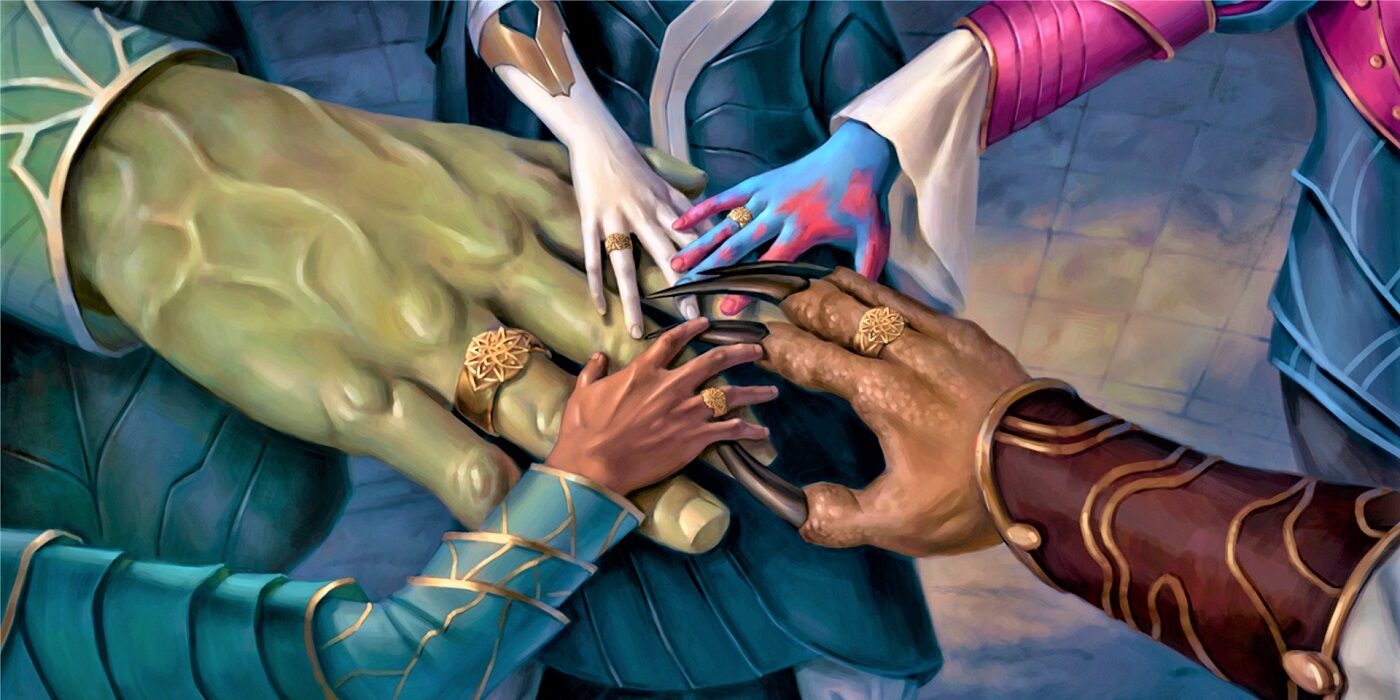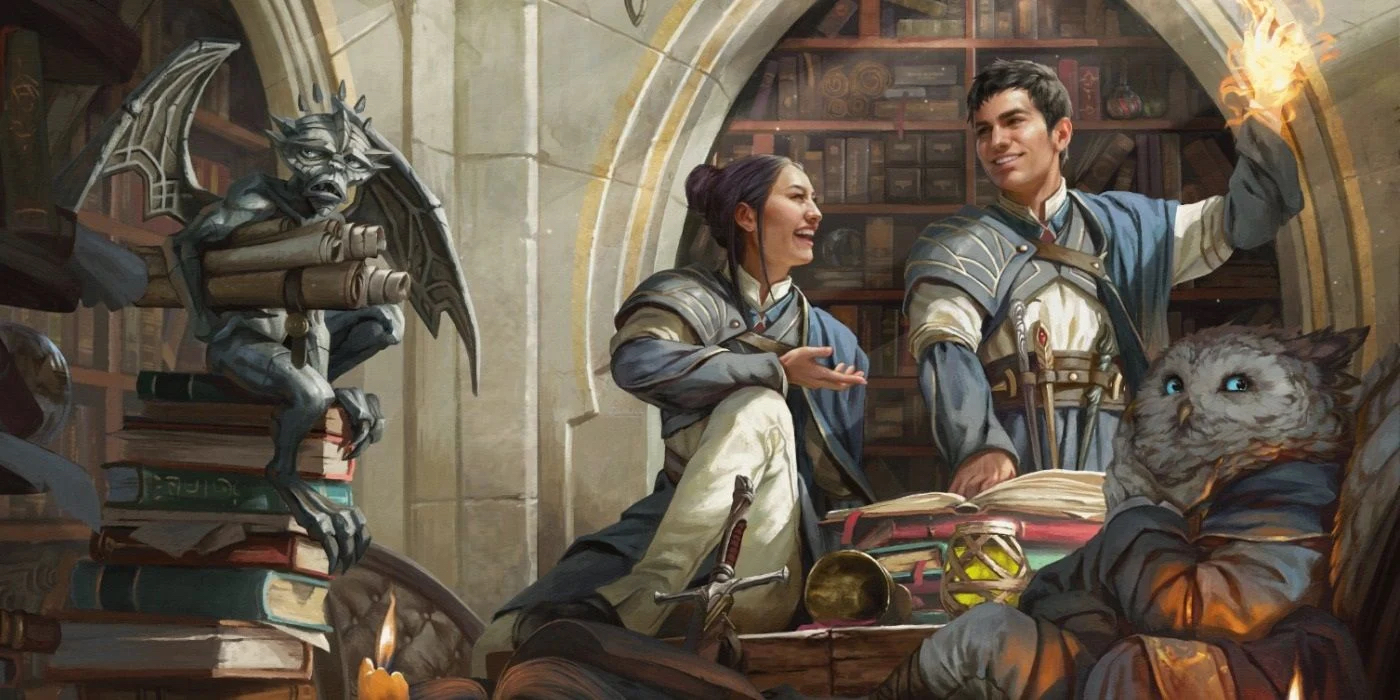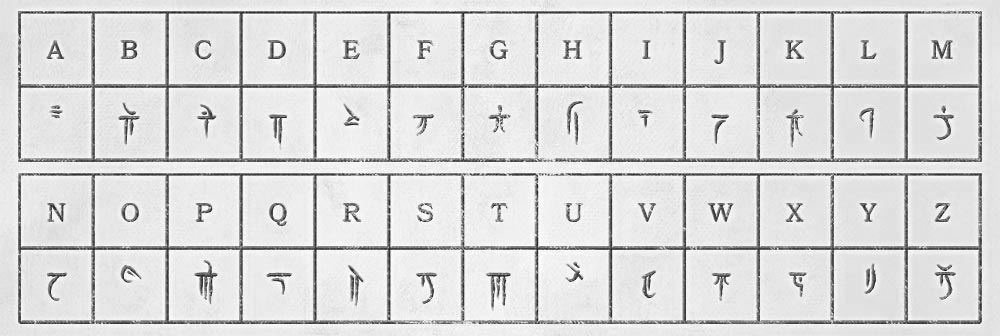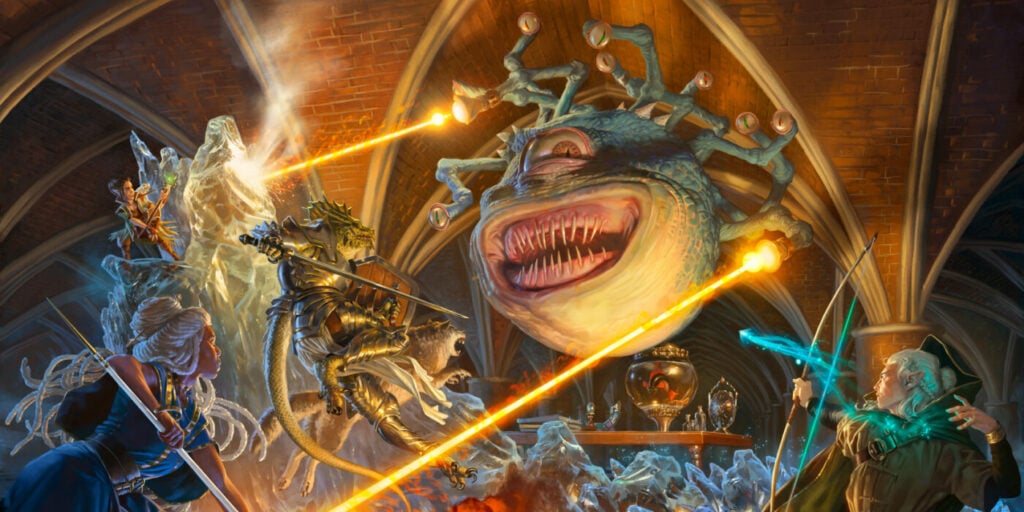What’d You Say? – A Guide to D&D Languages

Do you understand the words that are coming out of my mouth? Use this handy guide to D&D 5e languages to make sure the party does, too.
Welcome, adventurers of the Realms! Dungeons & Dragons is a phenomenal roleplaying game with millions of possibilities for encounters, interactions, and adventures. Players can be anything their heart desires, from a world-weary human fighter to a paladin descended from actual angels. Spells rocket across the battlefield while great warriors cross swords with terrible undead masters. Sometimes, however, a fight can be avoided with a few well-placed words in one of many DnD 5e languages.
Of course, for that approach to work, your opponent needs to understand you. In the real world, there are multitudes of languages, regional dialects, and slang. In the Forgotten Realms, that just covers Common. Elves have their own language, as do Dwarves, Dragons, and even Demons, and each of them has dialects of their own. Want to make sure you know your way around Fantasy linguistics? Then check out our handy guide!
What are the Most Common Languages in DnD?
While there are countless dialects and languages in the realms, there are a few that you’ll find almost everywhere you look. The most common is, unsurprisingly, Common, based on Standard English. Of course, your DM may want to branch out and have different dialects of Common, but for the most part, every “humanoid” race can understand Common.
Elves and Dwarves are also numerous, so Elvish and Dwarvish are languages that most learned adventurers will know. While slightly less common, Draconic is a good language to know since you can discuss business with Dragonborn or plead for your life when an Ancient Red Dragon lands on your city’s walls. If you travel in the less reputable parts of the city, or in the subterranean Underdark, Undercommon is a good language to know.
Of course, for the smaller folk, you’ll also want to know Halfling and Gnomish. Those races have a lot of short rage, so you need to know if they’re insulting you. On the other hand, Giant is a good language to know when you’re trying to convince an angry Hill Giant the next farm over has better crops.
While they aren’t as common, there are a few languages that you’ll still see a lot in cities around the Forgotten Realms. Orcish is a wild language, but a large variety of Half-Orcs prefer speaking in their mother tongue, so it’s good for shopkeepers. The same is true for Celestial and Infernal, languages spoken by Aasimar and Tieflings, respectively. Infernal is especially important to make sure you don’t get sold any cursed items. If you’re venturing out into the woods, you might want to take a course in Sylvan, the language of the Fey. That way, if the trees start to sing to you, you’ll know whether or not they’re happy to see you.
Do They Have the Same Alphabet in 5e Languages?
While several languages do share an alphabet, there are a few distinct styles of writing for the different languages. Common is again standard Common script, with the same letters used in English, and a script shared by Halfling. Elvish script is used for Sylvan, Elvish, and Undercommon and is the most common script used in enchanted items.
Dwarven script is easily the most commonly shared script, used in Dwarvish, Giant, Gnomish, Goblin, Orcish, and even Primordial! Dragon script is exclusively used by Dragons, and both Celestial and Infernal have their own series of runes. Even the Illithids have their own style of writing, called Quallith. This braille-like language is designed to be read with a mind flayer’s facial tentacles. It’s so alien that other races can only read it through magic.
What are Some Less Common 5e Languages?
In addition to the languages above, a savvy adventurer may want to delve into more esoteric languages. Whether to communicate with the various creatures outside their walls or purely for academics. The most common “uncommon” language is Deep Speech, the language of abominations like Aboleths and Illithids. After that is probably Primordial, the language of the first beings. You’ve also got Abyssal, the language of demons, and the elemental tongues Aquan, Terran, Auran, and Ignan. Some races even have their own unique language, like Kuo-toan, which probably sounds suspiciously similar to Murloc.
Are Thieves Cant and Druidic REALLY Languages?
Well, the wuick answer is “yes”, but not in the traditional sense. Thieves Cant is a series of hand gestures, symbols, and gibberish that allow Rogues to share coded messages. Innocuous but specific phrases could mark out wealthy targets, ward off would-be interlopers, or give safe house information.
Druidic, on the other hand, is a spoken language, but it sounds like natural sounds. Like bird songs or the rumble of trees. It can also be used in written form to mark circle territory. It’s often so well hidden that a casual observer would have no idea they’re seeing a message. Both of these languages are closely guarded secrets and require magic for the uninitiated to understand.




